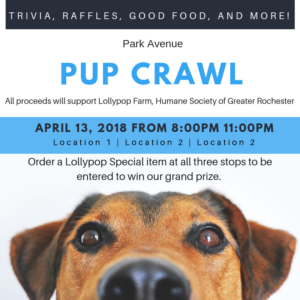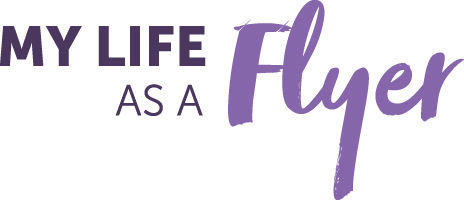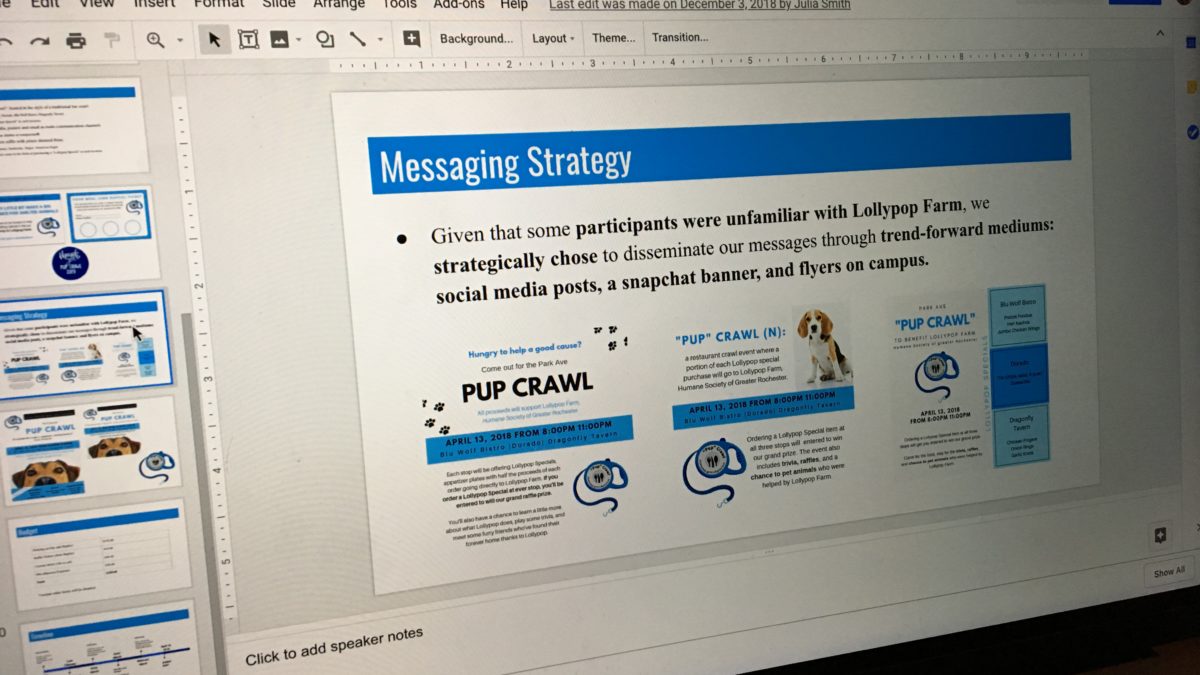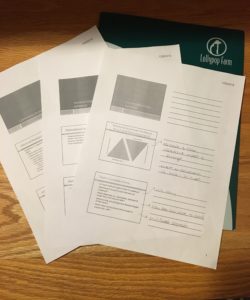What do you think of when you hear the word “campaign?” If I had one guess, I’d bet the first thing that popped into your head was politics or a campaign for election to an office. Campaigns, however, are so much more!
Campaign is a broad word, but it can be defined as any initiative that uses organized communication activities in an attempt to generate a specific outcome in a relatively large number of people, typically within a specified period of time. This can include anything from getting votes for an election to soliciting donations for cancer research to convincing people to recycle. As communication professionals, it’s important to understand how to create an effective campaign, and as media consumers it’s important to recognize when you are being campaigned to. COMM 312, Communication and Media Campaign Management, touches upon both, teaching students how to conduct research before a campaign, design a wide variety of materials for a campaign, and implement and manage campaign efforts.
This course is required for communication and media majors, but all majors are welcome to take it – my class included marketing, business, education, and Spanish majors (although some also double major in communication, like myself). The only requirement is that you first take COMM.Q 101 – Intro to Media Studies. Luckily, that course can count as your Social Science PEQ, in addition to counting towards your overall liberal arts credit requirement!
I declared my communication major nearly four years ago, before this class was created and made a requirement, so I was one of the few remaining communications students who wasn’t actually required to take the course. That being said, when I heard about this class, I knew I needed to make room in my busy schedule for it. Campaign management is an area I am considering a career in and, even if I don’t end up doing only that, many of the associated skills taught in the class are transferable to a wide variety of professions, both inside and outside of the communication field. Over the course of the semester we discussed how to use motivational appeals and other persuasive techniques, select various communication channels and tactics (social media, flyers, emails, etc.), target a specific audience, plan an event, write copy for print and media, and conduct formal and informal research to inform campaign efforts, in addition to receiving advice for working with community partners and handling other professional relationships.

One of the best parts of this class wast he way in which we got to learn outside of the classroom, as opposed to just in it. We were split into teams of 4-5 and our semester long assignment was to plan a campaign for a real partner in the community. Half of the teams worked with the development team at Lollypop Farm, the Humane Society of Greater Rochester, to plan a fundraising campaign, while the other half worked with the Finger Lakes Donor Recovery Network to develop a campaign to increase the number of organ donors in the area. Our community partners came to class early in the semester to give us some background on the organizations and their needs, and then we were off on our own. Over the new few months, we developed goals and objectives, facilitated focus groups, created event plans, designed marketing materials, composed budgets, and planned for any potential logistical issues, all culminating in a final campaign presentation to our community partners. We didn’t have to execute our campaign, but the end goal of the project was to have a comprehensive plan with marketing materials ready to go so anyone could execute it if they chose to. Overall, the response was positive and it was amazing to see how unique each campaign was, even though we were working with the same partners and started with the same information.

Our once small department is quickly growing, so the class may not always by taught by the same professor, but I took it with Dr. Carolyn Lagoe. She, along with all the professors in our department, brings a wealth of knowledge and experience to the classroom. She was able to leverage her professional network for this class, bringing in guest speakers to discuss their careers in the communications field and arranging a class field trip to Causewave Community Partners (formerly the Ad Council of Rochester). The latter experience was particularly meaningful to me as it inspired me to pursue and accept an intern position at Causewave for this semester!
I feel strongly that Communication and Media Campaign Management is one of the most valuable courses I have taken during my time at Naz. While I’ll use much of what I learned every day as a communication professional, so much of what we covered, such as professionalism, strategic writing, time and resource management, and research best practices, are skills that can give you the upper hand in whatever field you’re looking into – a historian may find themselves planning an event and a physical therapist may want to advertise their clinic. The media and the ability to reach others through it is an extremely powerful force in our society and taking COMM 101.Q, followed by COMM 312 is a great way to learn more!


